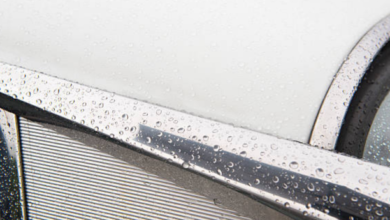Common Causes of Gear Slipping in Transmissions

What is Gear Slipping?
Gear slipping refers to a situation in which a vehicle’s transmission fails to engage or maintain a specific gear properly. When you experience gear slipping, you might notice the engine revving higher than usual without a corresponding increase in vehicle speed, or you may feel a sudden loss of power or acceleration. This issue can occur in both manual and automatic transmissions and may indicate various underlying problems such as worn clutch plates, low transmission fluid, or mechanical issues within the transmission itself. It’s essential to address gear slipping promptly to prevent further damage to the transmission and ensure safe driving conditions.
Causes of Gear Slipping
There are several factors that contribute to the slipping of gears and cause problem. Here are the main causes of gear slipping:
1. Worn Clutch Components:
Worn clutch components are a common cause of gear slipping in manual transmissions. Over time, the friction material on the clutch disc can wear down, reducing its ability to grip the flywheel and pressure plate effectively. Similarly, the pressure plate can become worn or weakened, resulting in inadequate pressure being applied to the clutch disc. Additionally, the release bearing, which facilitates the disengagement of the clutch when the pedal is depressed, can wear out and cause inconsistent clutch engagement. These worn components can lead to slipping between the clutch disc and flywheel, resulting in difficulty shifting gears, loss of acceleration, and increased engine RPM without a corresponding increase in vehicle speed. Addressing worn clutch components promptly through replacement or repair is essential to restore proper clutch operation and prevent further damage to the transmission.
2. Low Transmission Fluid:
Low transmission fluid levels are a critical factor contributing to gear slipping in both manual and automatic transmissions. Transmission fluid serves multiple purposes, including lubricating moving parts, cooling the transmission, and facilitating gear engagement. When the fluid level drops below the recommended level, the transmission may not receive adequate lubrication, leading to increased friction and heat buildup. Additionally, low fluid levels can result in insufficient hydraulic pressure within the transmission, causing gears to slip or fail to engage properly. Symptoms of low transmission fluid often include difficulty shifting gears, delayed or harsh gear engagement, and unusual noises from the transmission. Regularly checking and maintaining proper transmission fluid levels is crucial for ensuring smooth gear operation and prolonging the lifespan of the transmission system.
3. Faulty Transmission Solenoids:
Faulty transmission solenoids are a common culprit behind gear slipping in automatic transmissions. Solenoids are electro-hydraulic valves responsible for controlling the flow of transmission fluid and activating specific gears within the transmission. When these solenoids malfunction or fail, they may not properly engage or disengage the intended gears, leading to gear slipping, rough shifting, or failure to shift altogether. Additionally, a faulty solenoid can result in inadequate hydraulic pressure within the transmission, causing gears to slip or struggle to maintain engagement. Symptoms of faulty transmission solenoids often include erratic shifting behavior, delayed gear engagement, or the transmission getting stuck in a particular gear. Diagnosing and replacing faulty solenoids promptly is essential to restore proper transmission function and prevent further damage to the transmission system.
4. Damaged Gears or Bands:
Damaged gears or bands are significant contributors to gear slipping in both manual and automatic transmissions. Gears and bands are essential components responsible for transferring power from the engine to the wheels by engaging different gear ratios. When these components become damaged due to wear and tear, improper adjustment, or mechanical stress, they may slip out of place or fail to engage properly, resulting in gear slipping. In manual transmissions, worn or damaged gears can lead to difficulty shifting or maintaining gear engagement, causing noticeable slippage and loss of power. In automatic transmissions, damaged bands, which wrap around various gears to control their movement, can lead to similar symptoms, including slipping between gears, delayed shifting, or harsh gear engagement. Addressing damaged gears or bands often requires transmission disassembly and repair by a qualified technician to restore proper transmission function and prevent further gear slipping issues.
5. Clutch System Issues:
Clutch system issues are a common cause of gear slipping in manual transmissions. The clutch system consists of several components, including the clutch disc, pressure plate, release bearing, and clutch fork, all working together to engage and disengage the transmission from the engine. When any part of this system becomes worn, damaged, or misadjusted, it can lead to gear slipping. For example, a worn clutch disc may not provide sufficient friction to properly engage with the flywheel, resulting in slippage during gear changes. Similarly, a weak or damaged pressure plate may not exert enough force on the clutch disc, causing incomplete engagement. Issues with the release bearing, such as wear or binding, can also prevent smooth disengagement of the clutch, leading to difficulty shifting gears and potential gear slipping. Proper maintenance and timely replacement of worn clutch components are essential to ensure smooth operation of the clutch system and prevent gear slipping in manual transmissions.
6. Torque Converter Problems:
Torque converter problems can lead to gear slipping in automatic transmissions. The torque converter is a fluid coupling device that transfers power from the engine to the transmission, allowing the vehicle to move forward or backward. When the torque converter malfunctions or experiences issues, it can result in gear slipping and other transmission problems. Common torque converter issues include worn or damaged clutch plates, which can prevent the torque converter from transferring power efficiently between the engine and transmission. Additionally, a malfunctioning lock-up clutch within the torque converter can cause slippage between the converter’s components, leading to gear slipping, delayed shifting, or erratic behavior. Addressing torque converter problems typically requires diagnostic testing and, depending on the issue, repair or replacement of the torque converter assembly to restore proper transmission function and prevent gear slipping.
7. Transmission Fluid Contamination:
Transmission fluid contamination may be the reason for gear slipping in both manual and automatic transmissions. Transmission fluid contamination may be another factor why the gear slips in both manual and automatic transmissions. Contamination with dirty, debris, moisture or metals are transmitted fluid quality factors that make it ineffective at lubrication and cooling transmission parts of the components system. Apart from system power fluid contamination can also disturb the smooth functioning of transmission valves, solenoids, and seals resulting in transmission leakage and problems. Besides, metal fragments in the fluid could result in the teeth and bearings of transmission being worn out, which is one of the reasons of giving way to gears. Regular transmission maintenance, particularly involving the flushing of the fluid and filter replacement, may ensure the elimination of any contaminations in the transmission fluid and the maintenance of the system functionality. Instantly coping with the leakage by using replacement fluid and if the need arise, transmission component inspection and repair, is a necessary measure to slow down slipping of gears and prevent early transmission failure.
8. Mechanical Damage:
The gear shifting inside the transmission causes gear slipping due to the mechanical damage sytem. There are various parts of transmission such as gears, shafts, bearings, synchronizers and seals that obtain damages due to overuse, inadequate maintenance or even high stress. When these components become too unable to be properly engaged or disengaged, which are the commonest causes for “gear slipping” during acceleration and deceleration, the outcome is the alpha. For example, damaged synchronizers may result into difficulty in shifting that gears. It may damage the bearings or the shaft if they were worn. Due to this, we may have friction and resistance within the transmission and gear slipping is the result. Moreover, a twisted or crated transmission case or housing may cause misalignment and malfunctioning of interior parts, which could also be the reason for gear slippage problems. Mechanical damage normally necessitates a good diagnostic examination of the transmission by a proficient technician to search and replace or repair deteriorated components and thus bring back normal gear movements and eliminate the issues of slipping gear. Continuous maintenance and immediate action to signs of mechanical wear off or with damages are vital and would also preserve the integrity of the transmission system.





Bases for Xrumer https://dims-tudio.ru